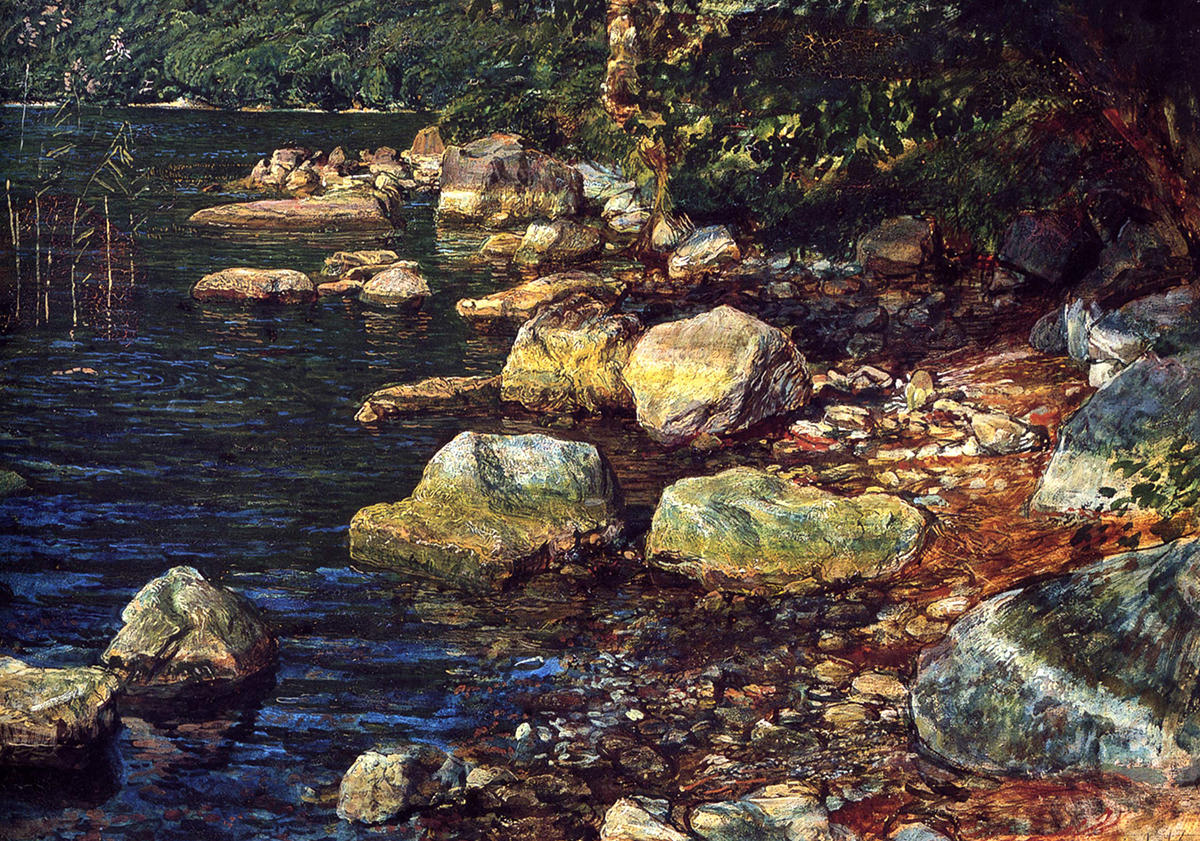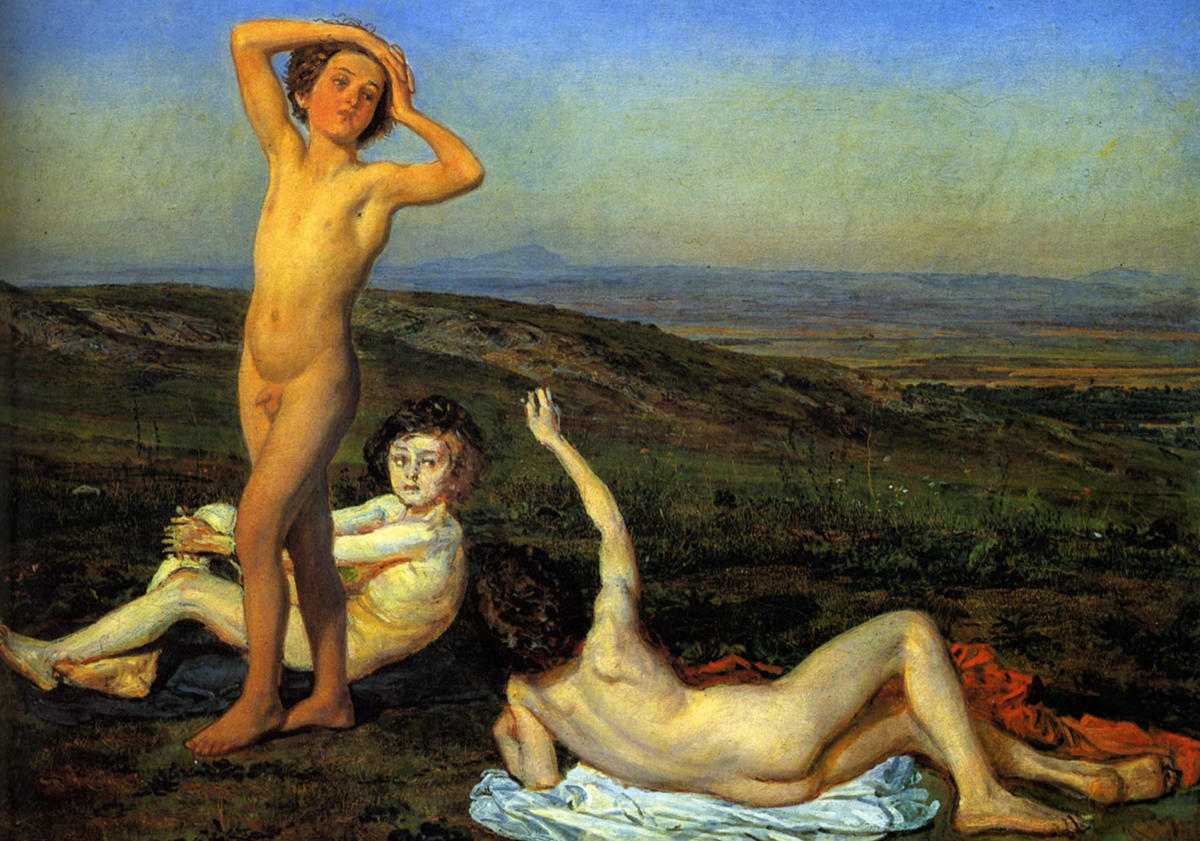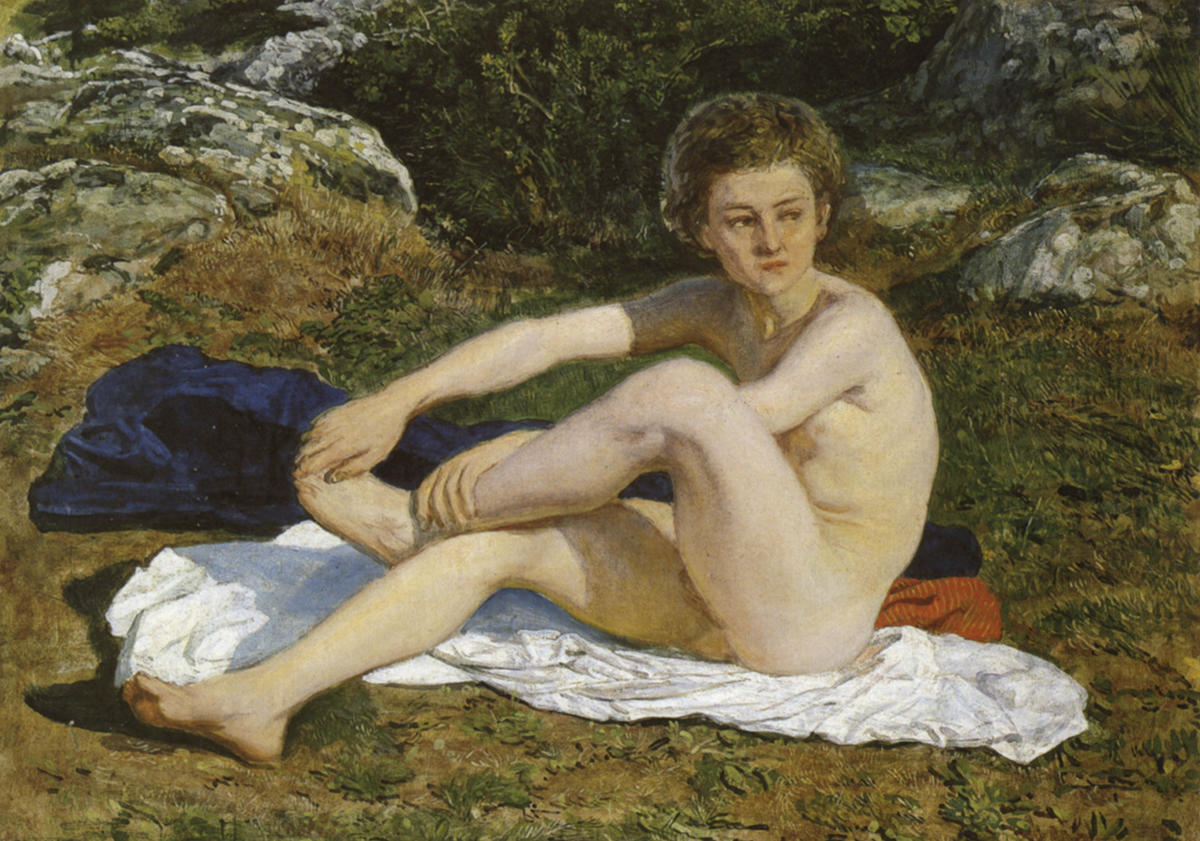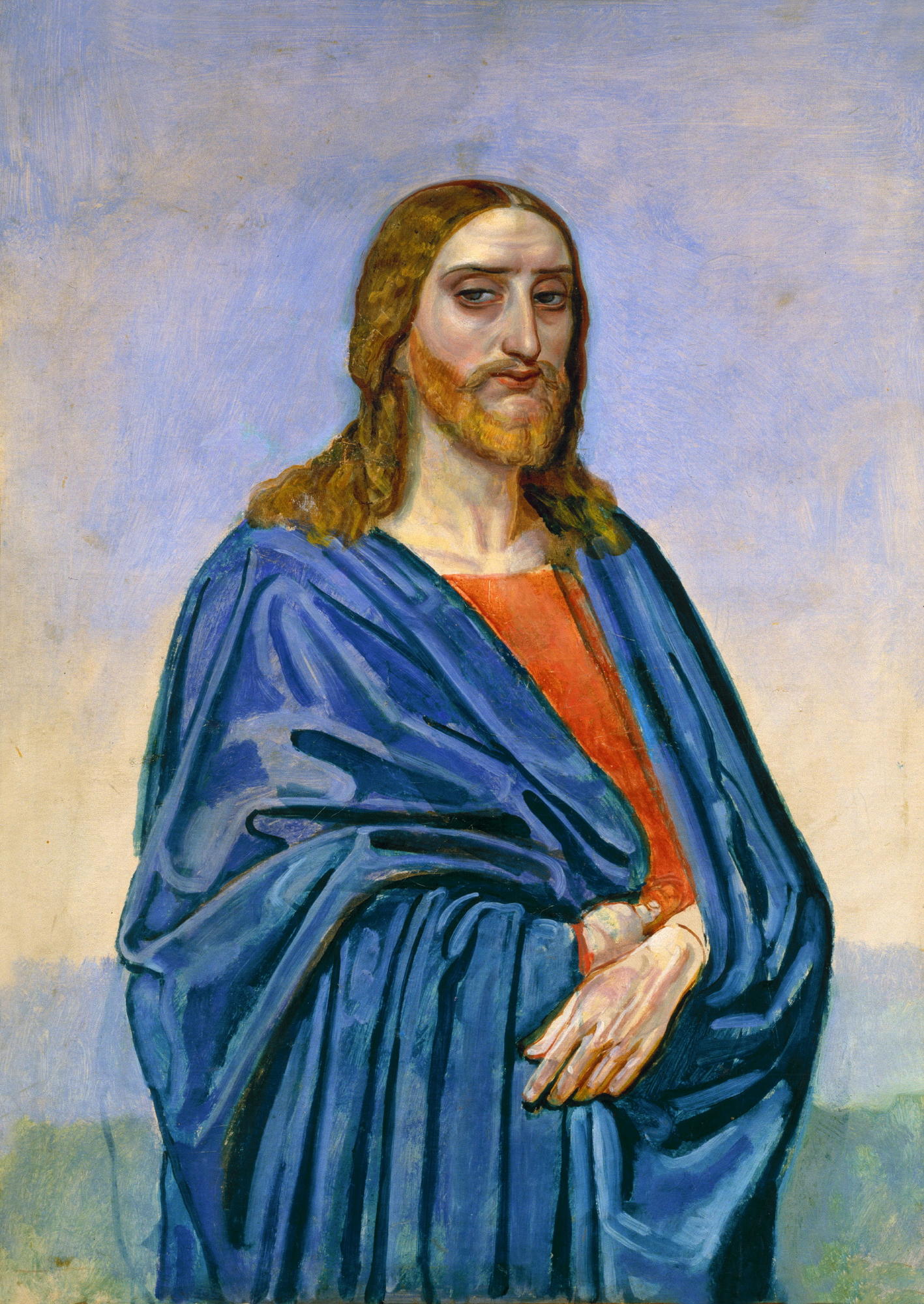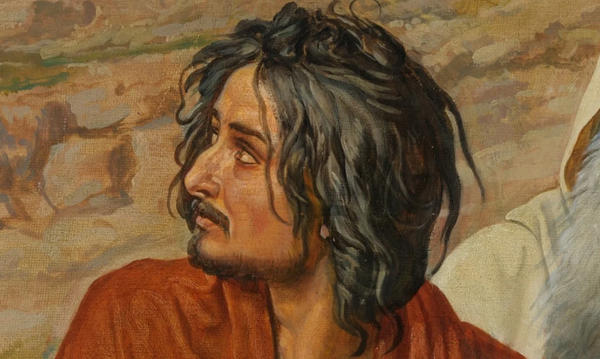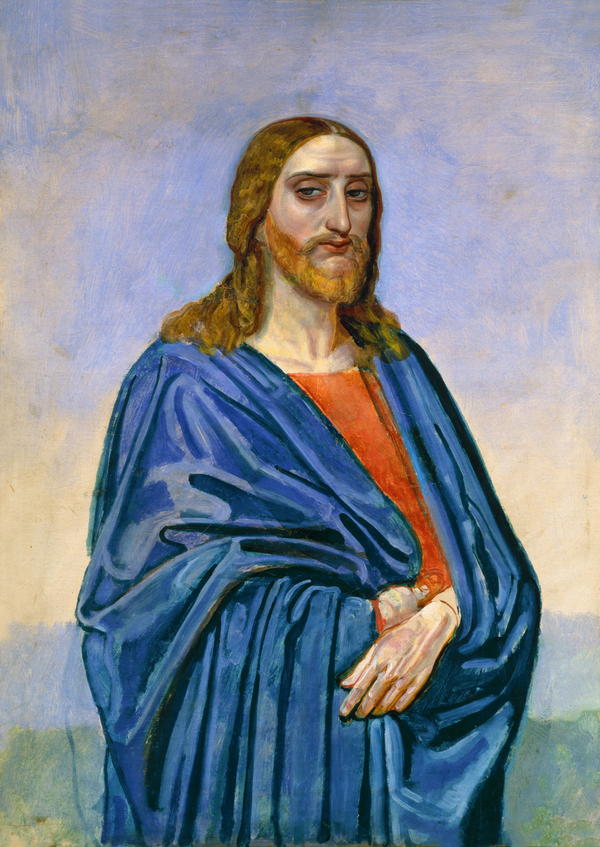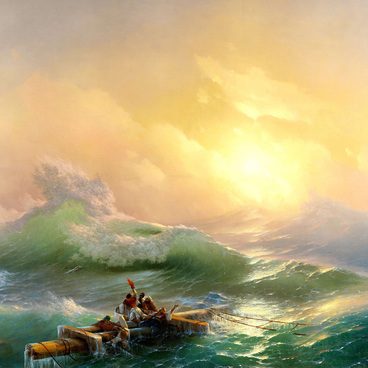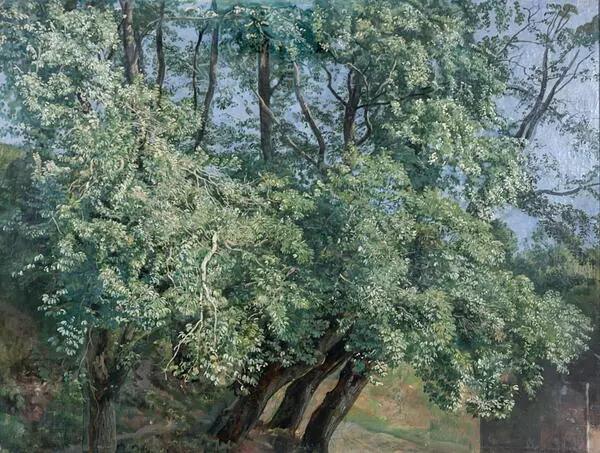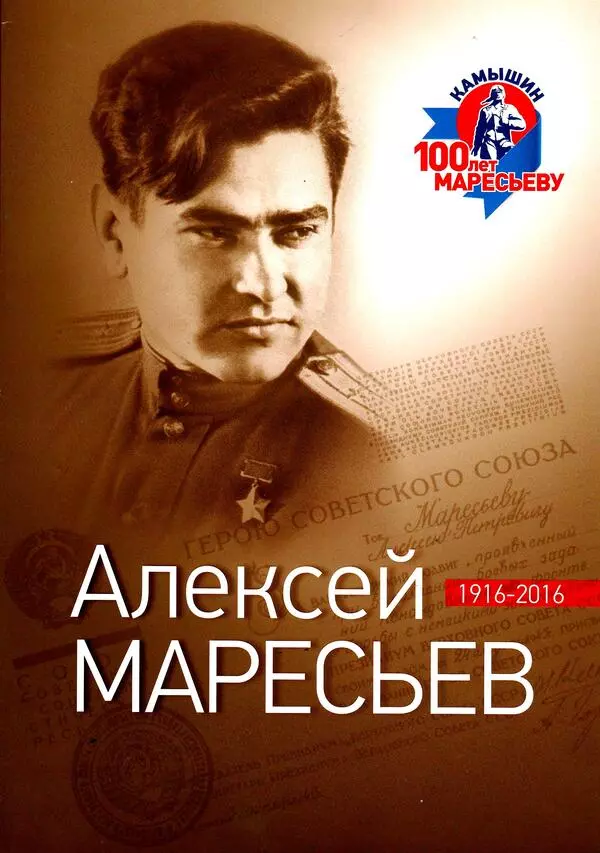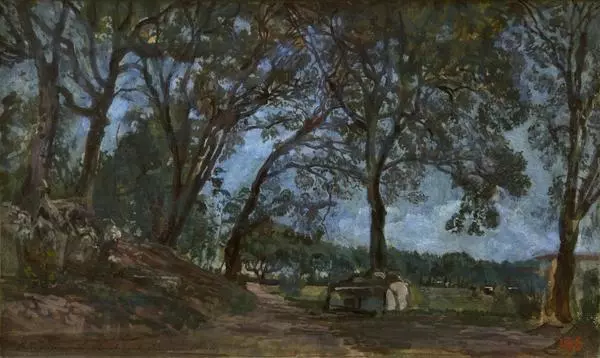In the State Russian Museum, there is a large sketch of Ivanov’s painting The Appearance of Christ to the People. Initially, the artist planned to use a canvas exactly of that size: about two meters and a half in length and 1.5 meters in height. But later, Ivanov decided to make it even larger: the size of the final version, kept in the Tretyakov Gallery in Moscow, is 7.5×5.4 m.
Ivanov studied at the Imperial Academy of Arts in Saint Petersburg. Like many of the Academy’s talented students, he was sent to Italy to enhance his skills. In Rome, the artist copied works by Michelangelo in the Sistine Chapel and painted sketches of scenes from the Bible. He also studied the New Testament.
At that moment, the artist had the idea of creating a large painting about the first appearance of Jesus Christ before the people. He chose the episode from the first chapter of the Gospel of John, where John the Baptist was baptizing people in the Jordan River and, seeing the approaching Messiah, pointed at him. Ivanov stated that the scene was global: according to him, that moment was a turning point for the whole mankind.
In his painting, the artist wanted to show each and every one: in the sketch, we can see people of different ages, social classes and beliefs. Behind John the Baptist, there are the future disciples of Christ: the young John the Evangelist, behind him, Saint Peter, Saint Andrew and Nathanael who was referred to as the doubting. On the right, on the top of a hill, we can see the sinners: Jewish Pharisees and Roman cavaliers.
In the foreground, we can see a colorful crowd of people that have very different feelings about what is happening: hope, joy, curiosity, bewilderment… The man in fine clothes springs back from the prophet almost in disgust, and the slave with a rope over his neck is smiling through his tears: now he has a hope for rescue. Ivanov wrote: for the first time, joy appeared through the suffering he was accustomed to.
Ivanov studied at the Imperial Academy of Arts in Saint Petersburg. Like many of the Academy’s talented students, he was sent to Italy to enhance his skills. In Rome, the artist copied works by Michelangelo in the Sistine Chapel and painted sketches of scenes from the Bible. He also studied the New Testament.
At that moment, the artist had the idea of creating a large painting about the first appearance of Jesus Christ before the people. He chose the episode from the first chapter of the Gospel of John, where John the Baptist was baptizing people in the Jordan River and, seeing the approaching Messiah, pointed at him. Ivanov stated that the scene was global: according to him, that moment was a turning point for the whole mankind.
In his painting, the artist wanted to show each and every one: in the sketch, we can see people of different ages, social classes and beliefs. Behind John the Baptist, there are the future disciples of Christ: the young John the Evangelist, behind him, Saint Peter, Saint Andrew and Nathanael who was referred to as the doubting. On the right, on the top of a hill, we can see the sinners: Jewish Pharisees and Roman cavaliers.
In the foreground, we can see a colorful crowd of people that have very different feelings about what is happening: hope, joy, curiosity, bewilderment… The man in fine clothes springs back from the prophet almost in disgust, and the slave with a rope over his neck is smiling through his tears: now he has a hope for rescue. Ivanov wrote: for the first time, joy appeared through the suffering he was accustomed to.
In Rome, the artist met and became a close friend of the writer Nikolay Gogol who was working at his books there. Gogol helped Ivanov to elaborate the concept of the painting and wrote a lot about the artist’s idea in his letters and articles, so that the news about it came to Russia. The writer’s features can be recognized in the figure nearest to Christ. As to Ivanov himself, he became the prototype for Gogol’s short story The Portrait.


